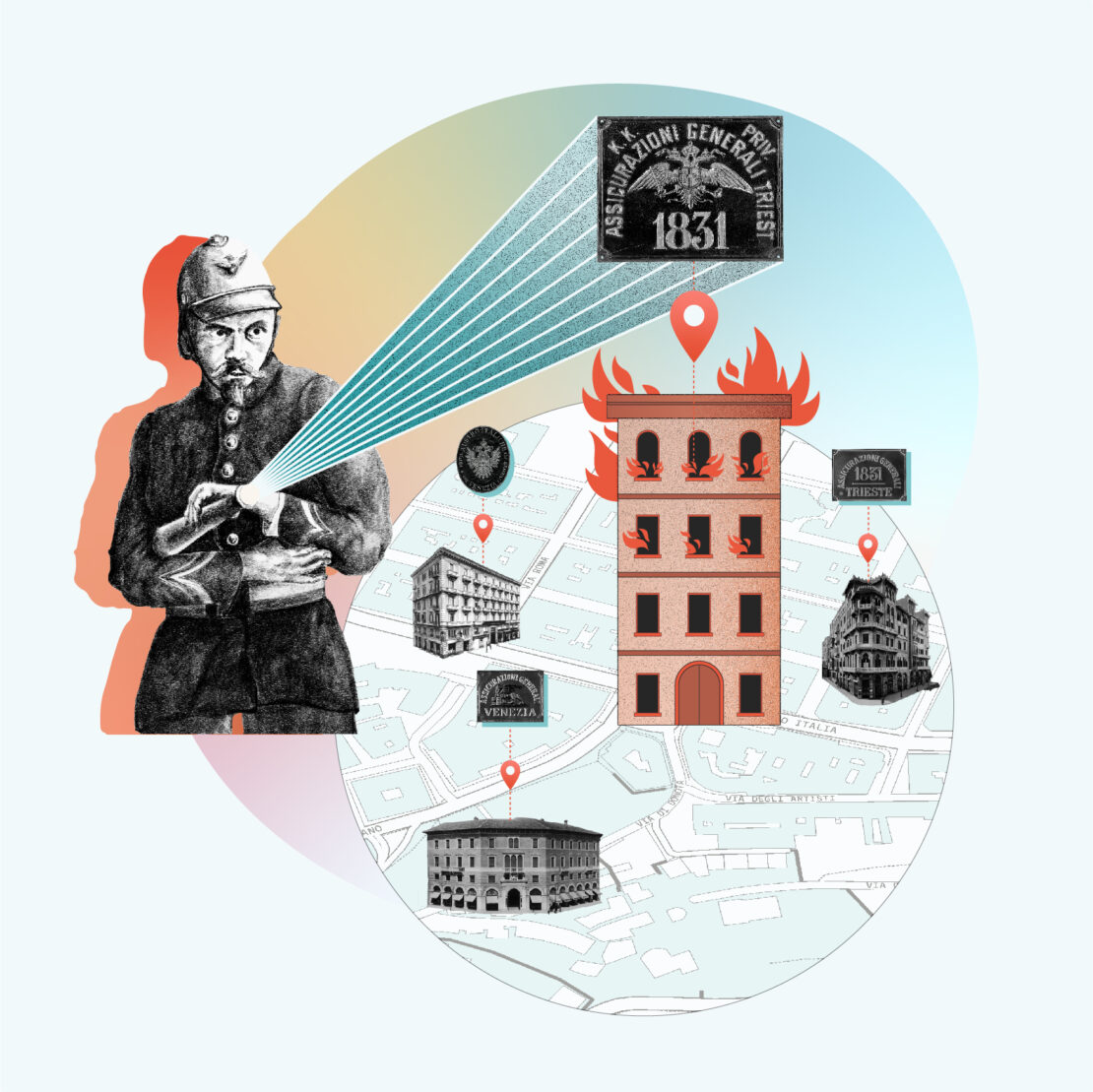1837 – Smart Technologies and Geolocation: The Fire Marks
Since the Great Fire of London in 1666, described in detail by Samuel Pepys and other writers, a lot of water had passed under the bridge, but not all of it was used to extinguish the flames. The fire that ravaged the English capital for five long days that September, having started in a bakery in Pudding Lane – perhaps thanks to a careless maid and some embers that set fire to a pile of wood – became the master of other people’s houses. The houses were still made of wood and straw, so close together that two people looking out of their own windows could shake hands. Barrels of flammable materials were stacked in the cellars of the shops. The fire killed 70,000 people and destroyed two-thirds of the city, including St. Paul’s cathedral. During those years, there was actually no public service for extinguishing fires. The European governments, in memory of that catastrophic event, tried to persuade citizens to take preventative measures and encouraged the construction of stone or brick buildings. However, the majority of houses continued to be built in wood and clay, and the culture of prevention did not take hold. We have to wait a little longer for widespread prevalence of fire insurance, at least until the first decades of the nineteenth century.
The insurance companies found an effective solution: fire marks. This system was first introduced in England in the seventeenth century, and from there spread across Europe. In the Italian peninsula, the first company to use the plaques was Azienda Assicuratrice, founded in Trieste in 1822 by Giuseppe Lazzaro Morpurgo. Shortly after, he would also found Generali, which would use the plaques right from its establishment in 1831.
The company threw itself into this business with a pioneering spirit, combined with a scientific and innovative approach. It supported the formation of city fire brigades, collected statistical data, and classified buildings into seven classes, based on their characteristics, from houses with stone walls and rooves to houses made entirely of wood. Then, the company’s agents went into action, delivering the metal plaques to the policyholders, who applied them to the front of their buildings, making them easily recognisable. It was a sort of geolocation system, albeit still “analogue”. Fire marks were visible on houses and buildings throughout Europe: in brass or tin, oval or rectangular, black, blue, red, gold, with double-headed eagles or winged lions, in Italian, German and Slovene, Croatian and Hungarian, Greek and other languages. Like watchmen, they protected the insured properties, at a time when cases of fire were very frequent.
The use of these plaques was not only an advantage for the owners of the insured properties, but also for the neighbouring owners, since the risk of flames spreading was reduced. This benefitted the safety of the whole community. The plaques thus helped to protect the building stock of the cities from the incalculable damage of possible fires, improve public order and, finally, spread that culture of prevention that had been missing at the dawn of the fight against fire.
In its long and intense period of commitment to firefighting, Generali spared no effort. It played a leading role in momentous compensations, like the one for the La Fenice theatre in Venice in 1836. It wasn’t the first time that La Fenice rose from the ashes (the first was in 1792, when it replaced the San Benedetto theatre, which was destroyed by a fire), but in response to this dramatic experience, Generali redefined its rates for theatres and in the following years insured those of Trieste, Fiume (now Rijeka), Graz, Tyrnau in Styria, Prague, Split and Ragusa (now Dubrovnik), as well as the San Carlo in Naples. It also covered similar risks around the world, as in the case of the Melbourne theatre. It’s no wonder then that, between the late nineteenth and early twentieth centuries, the company became a leader in the sector: the values insured, amount of premium income and compensation paid constituted over 20% of the national total. To give an example, in 1906 Generali insured a value of over seven billion lire against fire damage, the premium income amounted to more than eight million, while the compensations paid totalled five and a half million, putting it first in the national ranking for the sector.
The Generali Historical Archive preserves a rich collection of fire marks. In fact, it should not be forgotten that, because of their artistic value, fire marks are widespread cultural heritage and are exhibited in museums and collections all around the world. Even today, if we look up as we walk, we may happen to see some. They stand out above the doors of the buildings, against the blue sky, with the company’s emblem in the foreground.

